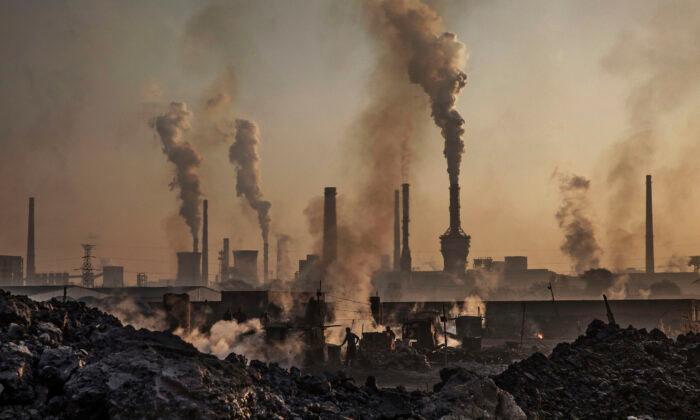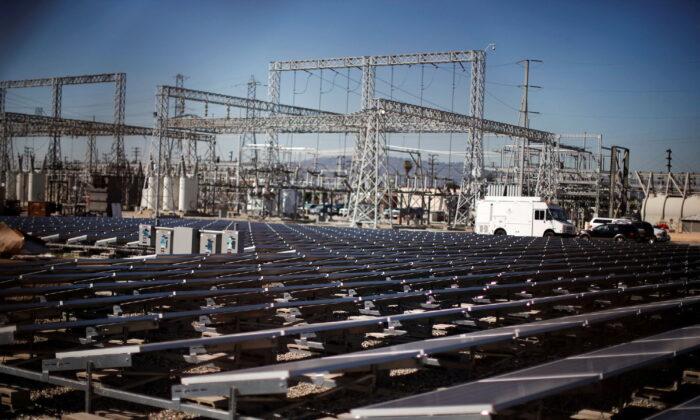But here’s the key number from the 2024 report: “Projects implemented in 2023 are expected to reduce 14.7 million metric tons of carbon dioxide equivalent over project lifetimes.” Note that’s “million,” with an “m.” And “over project lifetimes,” not just for one year.

In 2022, China spewed 11,397 million million metric tons (MMT). That is, 775 times the California cap-and-trade reduction over “project lifetimes,” not just one year.
Let’s next look at international comparisons. MMT and Mt both mean million metric tons of CO2 or its equivalent. Gt means billion metric tons.
Thus, the global growth of 321 MMT just for 2022 was 22 times the 14.7 MMT California cap-and-trade reduction over “project lifetimes.”
Total global MMT use of 36.8 Gt, or 36,800 MMT, was 2,503 times the 14.7 MMT California cap-and-trade reduction over “project lifetimes.”
(Note China’s 11,397 MMT was one third the global 36,800 MMT. And China’s 11,397 MMT was 2.4 times America’s 4,700 MMT.)
Next, according to the IEA, “US emissions grew by 0.8% (or 36 Mt) to 4.7 Gt in 2022.” That 4,700 MMT was 320 times the 14.7 MMT California cap-and-trade reduction over “project lifetimes.”
The fact is the rest of the world, especially China, doesn’t care about California’s wonderful cap-and-trade program. Developing countries, such as India with its 1.4 billion and growing population, Indonesia with 276 million, and Pakistan with 236 million, aren’t going to cut back on industrialization to induce good vibrations in the psyches of California environmentalists.
If they did, their people would starve, riot in the streets, and overthrow the current governments with extreme prejudice. Even the bosses of the Chinese Communist Party, which have a much tighter grip on their people than the leaders in other countries, fear a revolt if living standards crashed.
The Cap-and-Trade Annual Report begins with a foreword by Lauren Sanchez, senior climate adviser in Mr. Newsom’s office: “Californians across the state have experienced the impacts of climate change, ranging from intensifying heatwaves, droughts, floods, and wildfires to worsening air quality, food production disruptions, and economic damages from climate-related disasters.”

Note the top, dark blue line for Los Angeles-South Coast Air Basin Area. It dropped from a choking 35 parts per million of “8-hour carbon monoxide” in 1970 to just 3 PPM in 2018. As the explanation at the bottom says, 9 PPM is the “national air ambient air quality standard” and is shown by the red, dotted horizontal line. We’re now one-third of that.
This is a great success story. I remember coming out from Detroit to Los Angeles, and Disneyland in Anaheim, in 1964 with my family on a summer trip. The smog was even worse than in Detroit with its auto industries. You can see the thick smog in 1960s-era movies and TV shows.
The smog laws, although too draconian for my libertarian sensibilities, certainly worked. Life was made much better. We breathe remarkably clean air for a metropolitan area of 20 million people.
But has the cap-and-trade program made anybody’s life better, except for those who received the $28 billion in socialist largesse of which the governor’s office boasts?
Ms. Sanchez enthuses, “For more than a decade, California has been a global leader on climate action, setting ambitious targets to reduce greenhouse gas emissions while protecting public health, building the state’s economy, and creating a carbon-neutral, more equitable future for our communities.”
As we have seen, China and the rest of the world—including the United States as a whole—have not been “led” by California on this. And note that “equitable” word, which I keep writing about. It’s not the “equality” promised by 1960s-era civil rights laws. Which promised everyone would be treated equally, for example in buying a home or getting a job.
Instead, “equity” means a distribution of wealth according to government-dictated, socialist criteria.
“California Climate Investments is an example of the urgency that the state is placing on solving pressing environmental challenges, backed by $28 billion in funding and guided by a commitment to equity so that no one is left behind as we work toward a healthier future.”
That means the goal isn’t singly focused on “solving pressing environmental challenges,” but really is about “a commitment to equity.” That is, it’s a social engineering program.
Again, is the train to save the environment and move people, or to financially help “disadvantaged communities”? When a program has three stated purposes, you know it’s just a profligate pork project.
The governor’s office gives this as the current status of the project: “Work has begun to extend the 119 miles currently under construction to 171 miles of future electrified high-speed rail from Merced to Bakersfield, creating more than 13,000 construction jobs. Passenger service is expected to begin between 2030 and 2033.”
“Proposition 1 is a $9.95 billion bond measure for an 800-mile High-Speed Train network that will relieve 70 million passenger trips a year that now clog California’s highways and airports—WITHOUT RAISING TAXES. ... Routes linking downtown stations in SAN DIEGO, LOS ANGELES, FRESNO, SAN JOSE, SAN FRANCISCO, and SACRAMENTO, with stops in communities in between.”
None of that happened. And note 2008 was just before the “global warming” bugaboo to scare us was changed to the generic “climate change,” which has meant anything the alarmists could sell to the general public.
Far from putting a dent in global greenhouses gases and reducing global warming, or climate change, the California cap-and-trade program has been yet another program that reallocated scarce resources from productive things people use daily, such as gas-powered cars, to pipe dreams, such as the high-speed rail fiasco.
Cap-and-trade is a microcosm of the follies that have reduced living standards and the general quality of life in California, resulting in millions choosing to leave.







